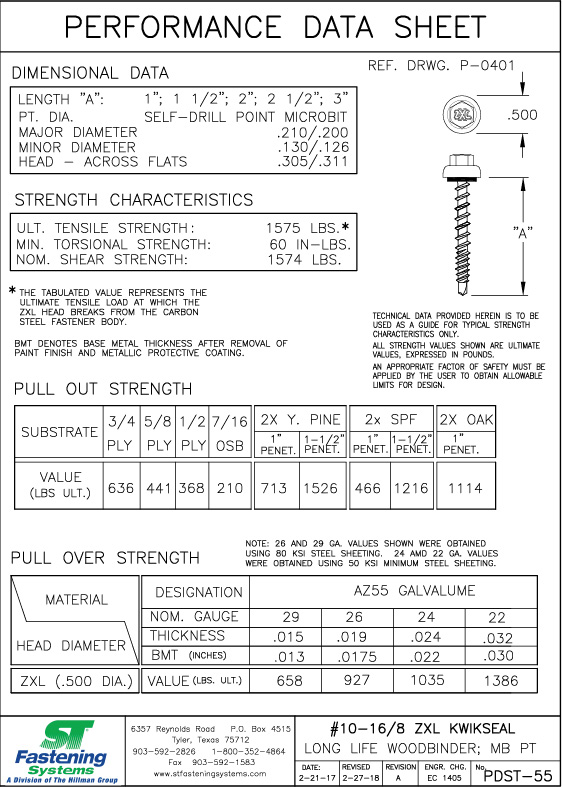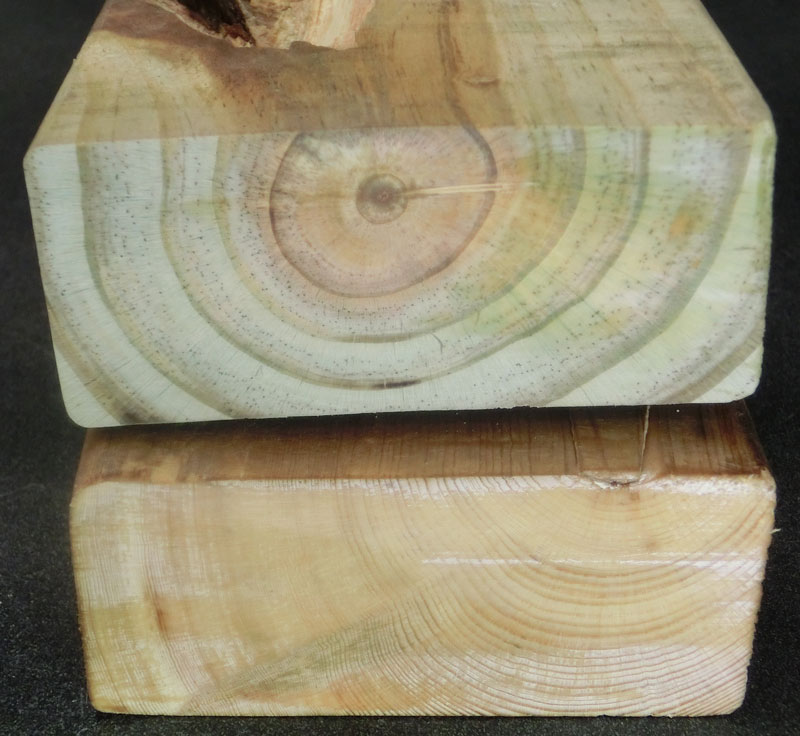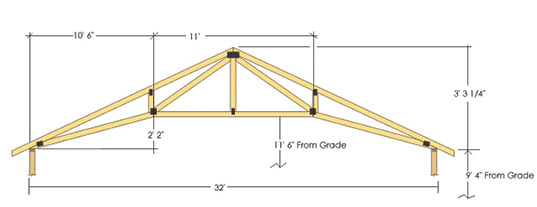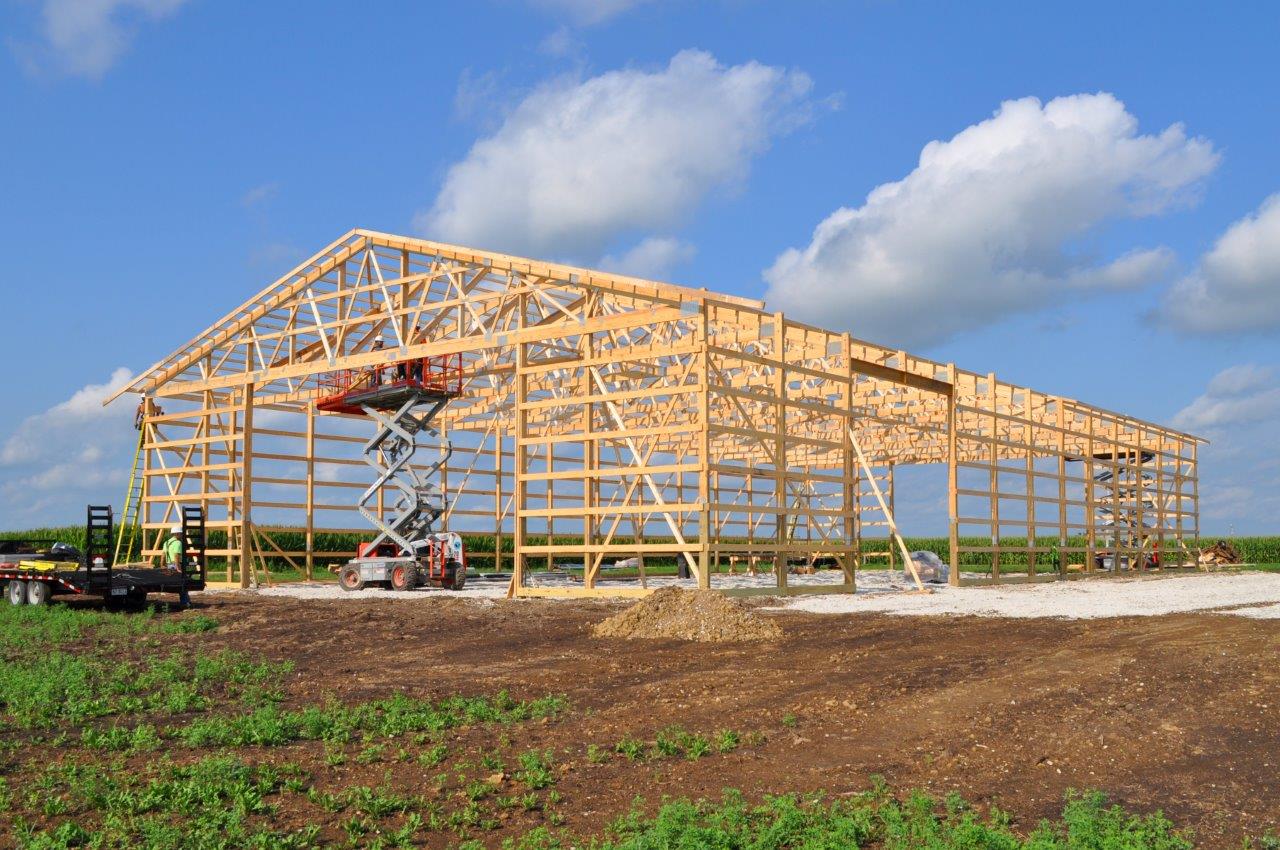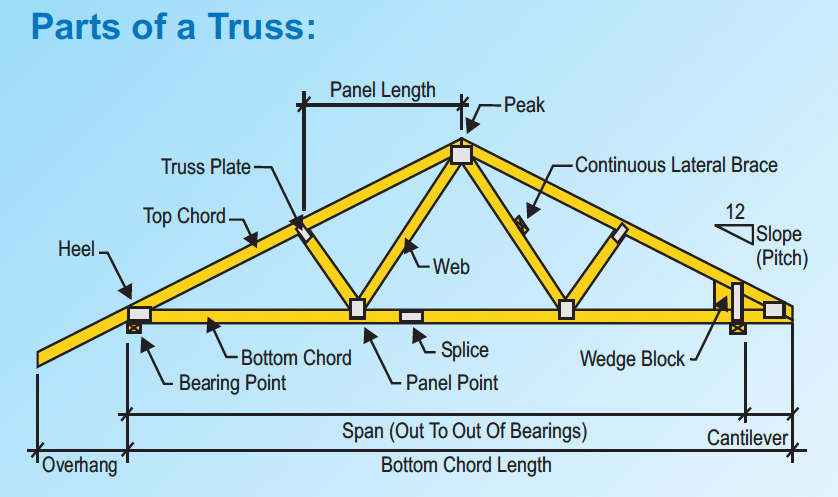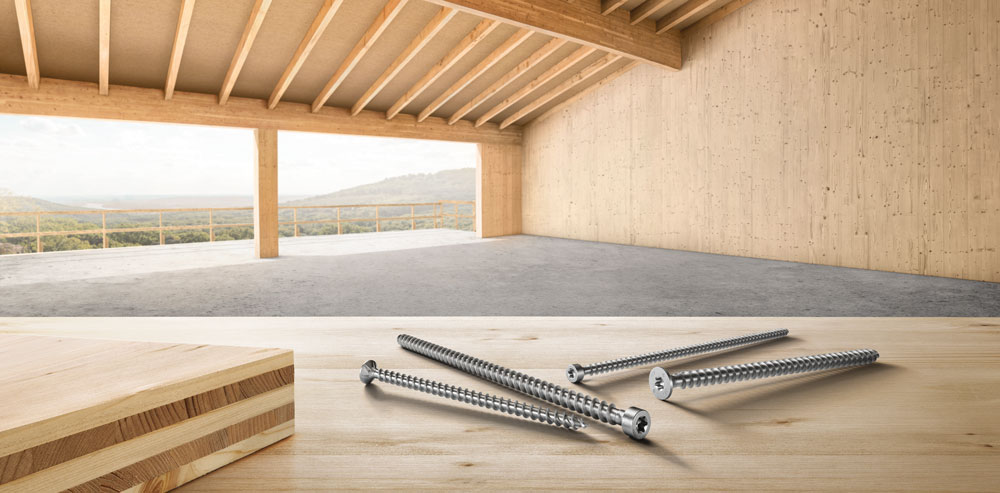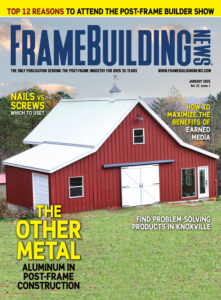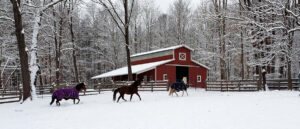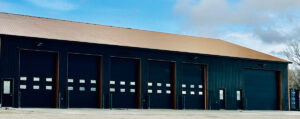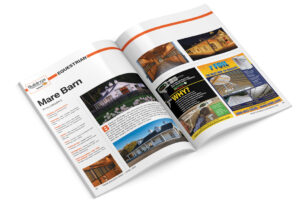Compiled by Karen Knapstein
Pull-out Test Results Depend Largely On Moisture Content, Grain Pattern
Where would your building projects be without the humble screws and nails that hold them together. The little workhorses allow you to build a structure out of a pile of components.
For the important job they do, it doesn’t hurt to know a little bit about how fasteners used in post-frame construction work and how performance test data illustrates how well they perform.
Many fastener manufacturers share testing data with their customers and potential customers. This important information is readily available, but builders need to remember the successful performance of the fastener depends not only on the fastener design, composition, and proper use, but also on the substrate.
Peter Graves, P.E., of ST Fastening Systems, explained why test data reports will have some sort of disclaimer, to the effect of, “Test results and fastener recommendations are based on laboratory conditions. Actual job site conditions vary; we assume no liability for the use of this information.”
Pullout Testing
“I have done pullouts on several of ST’s screws, along with several other manufacturers,” he said. “The screws are all similar for the same thread profile and diameter. The problem with published data is the screw in question has a pullout value, but the wood it is being pulled from has a different moisture content and grain structure. These factors can vary from end to end as well as board to board.
“As you can imagine,” he continued, “a bundle of wood being tested will be drier on the perimeter surface than the pieces inside, and visa versa depending when it rained or what the humidity is.”
Old growth lumber is significantly stronger and more stable than modern lumber that is largely harvested from tree farms. “The grain structure has changed considerably over the past 20 years with all the advancements in irrigating tree farms and fertilizing additives to force trees to grow faster,” he explained. “The tree rings are considerably further apart than wood grown in old growth forests in the past. [See image.] In pullout testing, it was evident that the more rings crossed, the higher the pullout. If a screw is installed near a ‘knot,’ the pullout value could be considerably higher.
“The pullout would differ depending on how the wood was cut also,” Graves continued. “Compare a 1-1/2” screw installed vertically in the 2020 board, vs. installed horizontally. Up and down it would cross 2-3 rings, while horizontally it would cross maybe 3-4. If installed longitudinally, it would have less pullout, since it would not cross a grain ring at all.”
The faster wood grows, the weaker it gets. After the American Wood Council rewrote all the load tables in 2012 or 2013, Graves re-tested and adjusted all the [data] values. “We even put a note stating, ‘All pullout values are based on wood densities found in present day wood products.’ Plywood has voids and fillers, while OSB is the least consistent of any of them, since it is just chips glued and pressed together. The pullout values will vary depending on how many big chips the threads engage in, and can be almost nothing when installed into small shavings.”
What does that mean for builders? Use the test data as a measure of strength characteristics for the fasteners you are considering. If you have concerns about whether or not you are using the right fastener for any particular job or application, talk with your suppliers and manufacturers.
Editor’s Note: Suppliers and manufacturers have granted Frame Building News permission to print fastener test data for select fasteners. If you have questions about a specific fastener’s application, contact your supplier or manufacturer.
Watch for a follow-up article that will address how screw proximity and other factors affect pull-out values. If you would like to see more data like this in future issues, call or email me (Karen) at 715.513.6767 or [email protected] to give your feedback. FBN
#10 WoodZip TP-17
Designed for metal roofing and sidewall panel installation onto wood substrates. Popular for post frame building panel installation and concealed fastening of shingle roofing ridge vent.
Features:
• #10-16 HI-L dual stage thread pattern for improved holding strength into wood substrates.
• 1/4” HWH and TP-17 Point for precision installation performance.
• Thick EPDM bonded washer
• Certified for use in Florida. DMG85 Silver coating covers the complete fastener. This fastener meets the 2017 Florida Building Code Version section R904.5.2 requirement and has a Miami-Dade County P.C. Listing # L 16-1206.07
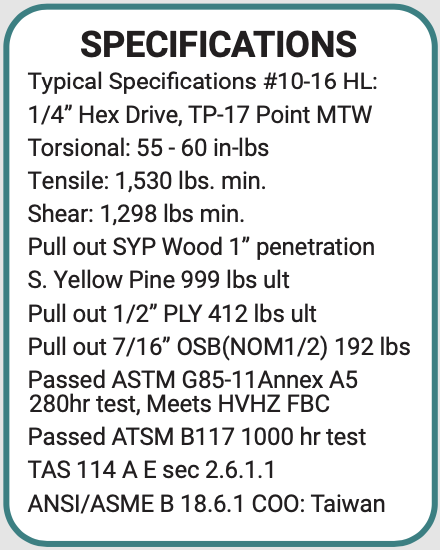
Copyright Direct Metals Inc.
#12 WoodZip SCAMP SSC
WoodZIP S.C.A.M.P. 304 Stainless Steep Cap Head
This little devil of a fastener was designed for original panel installation of 5V Crimp and other metal roofing panels to wood substrates. It has also found widespread use as a replacement fastener for old worn or backed out #9/#10 metal to wood roofing fasteners and original installation of many other metal roofing panels. The addition of masonry and concrete substrates to the specifications of the WoodZIP Scamp fasteners now allows for use as a multi-purpose fastener into concrete including the replacement of 3/16” diameter masonry screws.
Features:
• 304 Series Stainless Steel Capped Head
• Larger diameter oversized #12 Shank
• Galvanized and DMG85 Coated Shank with TP-17 Point
• Stainless Steel/EPDM “free spin” bonded sealing washer
• Standard colors available with powder coated paint
• 5/16” drive head for driving stability
• Miami-Dade County Product Listing # L 19-0219.02
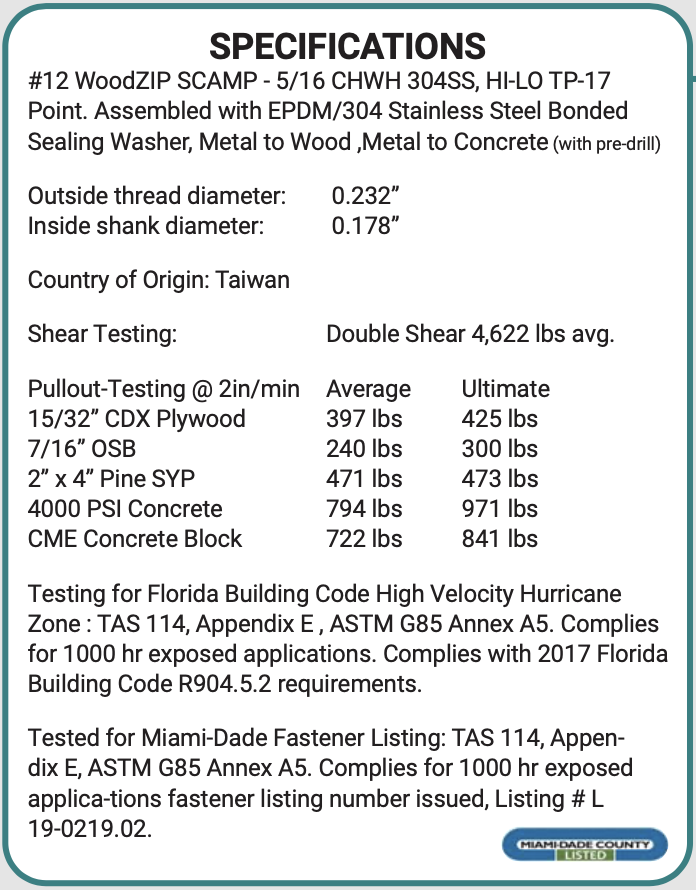
Copyright Direct Metals Inc.
